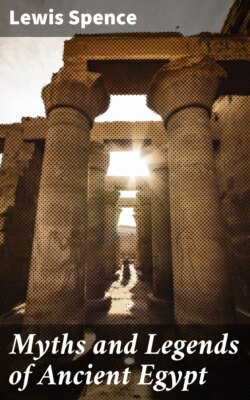Читать книгу Myths and Legends of Ancient Egypt - Lewis Spence - Страница 14
The Pyramid
ОглавлениеFrom such a resting-place was gradually evolved the stupendous conception of the pyramid. The pyramid is, in effect, nothing but a vast funeral cairn, a huge grave-mound, on which, instead of stones or pieces of rock, enormous blocks of granite were piled. Often the burial-chamber it contains is nothing more than a mere vault, to which access is gained by a narrow passage or gallery, which was carefully blocked up after the royal funeral.
Originally these burial-chambers were quite unadorned, and it was not until the end of the Middle Kingdom that it became usual to inscribe their walls with texts relating to the future life. Thus originated those wonderful Pyramid Texts from which we have learned so much of the lore of ancient Egypt. On the eastern side of the pyramid was built a temple dedicated to the defunct monarch, in which offerings to his manes were duly and punctually made. As he became deified upon death, so his statue in his character of a divinity was placed in an apartment specially prepared for it. The pile of stones proper from which the pyramid was evolved may be traced to the retaining wall of the tomb. By the Third Dynasty this small retaining wall had become roofed over and expanded into a solid mass of brickwork, called by the Arabs a mastaba, which was practically a truncated pyramid. This pile of brickwork was later in the same dynasty copied in stone, as at Saqqara, and enlarged by repeated additions and successive coats of masonry. Lastly, the whole received a casing of limestone blocks, and we have such a structure as the pyramid of Medum.
